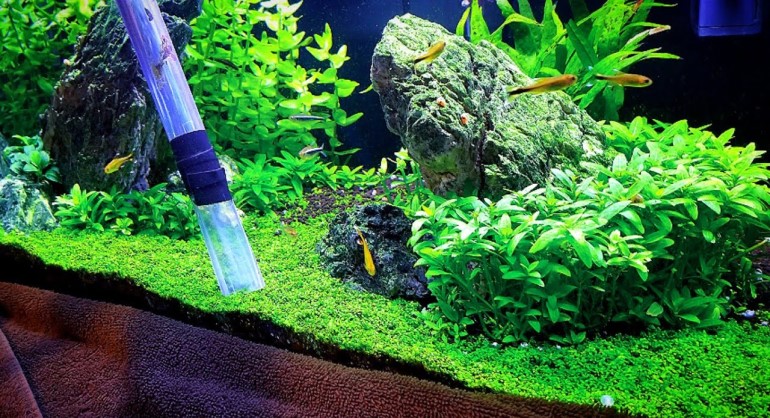Plants create a natural habitat for the fish in aquariums. If you are an enthusiastic aquarist, you may have a lot of plants and decorating stuff in your fish tank. You should not just keep on adding plants; instead, take care of them. Make sure you clean them to avoid algae formation and cloudy water.
If you neglect your plants for too long and do not clean them; then there will be a thick layer of algae on the plants. In that case, regular scrubbing would not help. We put extra emphasis on plant cleaning because these help in the reduction of ammonia with biological filtration.
There are various cleaning methods for aquarium plants. However, these methods may vary with the type of plants you use in your aquarium. For instance, there are silk, plastic, and live aquarium plants. You need to keep a maintenance routine if you are concerned for your fish’s health.
How to Clean Plastic Aquarium Plants?
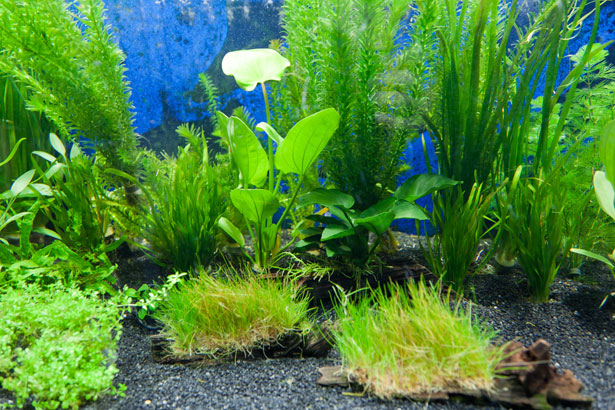
Cleaning silk plants or plastic plants is comparatively easier than live plants. You can take them out and wash them with some cleaning tools. However, you must make sure that there is no detergent or soap left on the artificial plants before placing them back.
If your plastic plants have thick algae then you need some hard cleaning. The following steps will tell you how to clean aquarium plants.
- Take some water into a pot, and boil it thoroughly.
- Add the artificial plants and let them soak in for at least ten minutes.
- Take the plants out of the water and scrub the algae and debris off.
- Wash off the plants thoroughly and then dry them.
- Place the plants back into the aquarium.
Cleaning Artificial Plants the Right Way
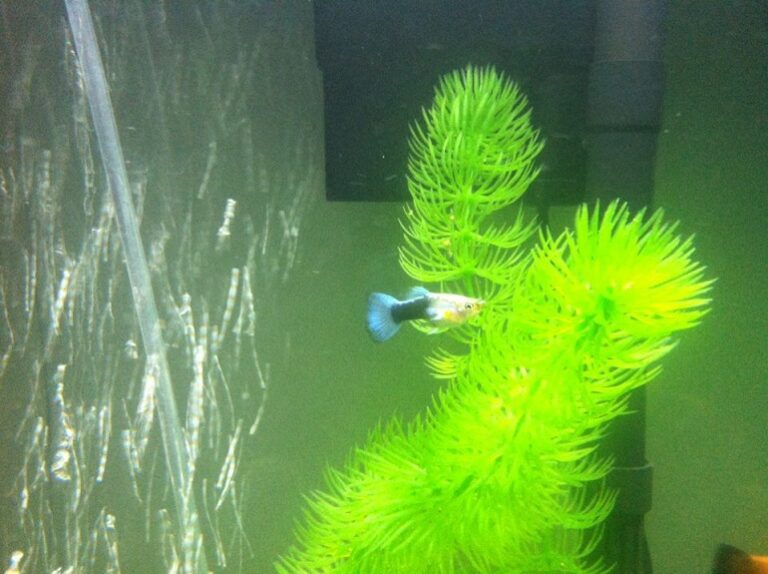
The artificiality of plants does not deprive them of care and attention. You need to pay the same amount of heed and clean them with the same care as you do with live plants. These plants also are sensitive to chemicals and bleaches. So, you need to be wise when choosing the cleaning process.
You can get rid of the dirt and debris with regular scrubbing or dusting. However, the tough algae threads may not get off with mere scrubbing. You may have to try some advanced cleaning methods. We recommend you to not use soaps or other chemicals as they can be harmful to the fish.
Moreover, you can use the aquarium-safe algae pad for fake aquarium plants. In extreme cases, you must go for bleach cleaning. Make sure you do not add excessive bleach solution as it can have a long-term effect.
The ideal ratio of bleach and water is 2 tablespoons of bleach in a gallon of distilled water. Prepare this regular bleach solution and soak the artificial plants in it for a few minutes. Try not to leave them in for long as it can affect the color and texture of the fake plants.
Once, the soaking process is complete, scrub off the remaining algae and rinse them thoroughly. Afterward, let them completely air dry or preferably in the sun. It will eliminate the bleach residue on plants to prevent it from harming the fish when placed back in the aquarium.
How to Clean Live Aquarium Plants
Cleaning live plants is a risky process as the plants can die during cleaning. If you are consistent in maintaining the fish tank and its plants then there will be less stuff to clean. You can use a clean spray bottle or cleaning pads to remove debris and calcium deposits.
However, if there is algae overgrowth on your live plants then you need some extensive cleaning other than plain tap water run. For instance, you may need some special scrubbing tools or utilize the traditional boiling water or go for bleach cleaning.
Boiling Water
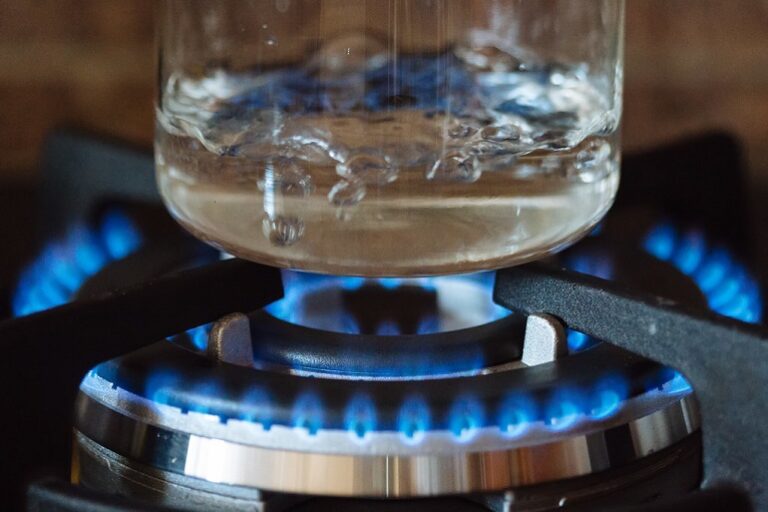
Boiling water has been in use for killing germs and bacteria for ages. In the case of live plant cleaning, the most difficult task is to get rid of algae. For this purpose, the boiling water is there to the rescue. It has the properties to kill algae growth and makes it easier to clean.
However, this boiling water is not suitable for live plants. Instead, you can use it for the silk plants, and plastic aquarium plants. Moreover, if you want to use it on live plants then you should not soak the plants in boiling water; instead, you can dip the clothe in boiling water and use them for cleaning the live plants.
Scrubbing Tools
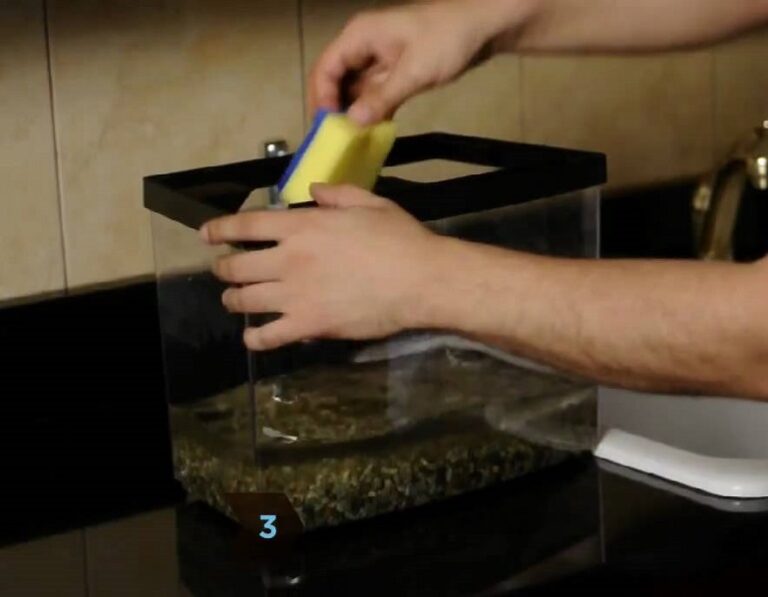
There are multiple tools to clean the fish tank and plants. For instance, a clean toothbrush, bottle scrubber, and algae cleaning pad. These tools help you to clean aquarium plants effectively.
If you are using some old toothbrushes or bottle scrubbers, make sure there are no chemical stains on them. Try and keep the fish cleaning supplies separate from other household items so that there are lesser chances of chemical infusion in your fish tank. The chemicals can be highly damaging to your fish and tank plants.
How to Clean Aquarium Plants with Bleach
Bleach cleaning is a sensitive process and requires ultimate attention and care. Although we are not in favor of using bleach on live plants, it is essential for overgrown algae. The best rule to ace this cleaning is to follow the exact ratio to prepare the solution.
- To prepare the solution, take 2 tablespoons of bleach in one-gallon water.
- Soak in the aquarium plant in this solution. 2-3 minutes for live plants and 7-10 minutes for artificial plants.
- Remove the plants from the solution and, scrub off the excess algae.
- Rinse it with plain room temperature water.
- Dry them completely before placing them back in the aquarium.
Once you use this cleaning process, observe the aquarium plants for any changes. If they do well even after 3-4 days then you are safe to use the bleach cleaning method in the future as well.
How to Clean Aquarium Plants Without Bleach
If you are on team no bleach, then there are some alternate ways of cleaning the plants. For instance, you can use mild cleaners or some kitchen ingredients to clean your tank plants.
Cleaning Aquarium Plants with Vinegar
Vinegar has great cleaning properties and less harmful effects, it can also help in reducing the pH level of tank water. Eventually, we can use it to clean plants both plastic and live. It is ideal for algae removal and limescale as well. Make sure you use pure white vinegar only.
- Take a gallon of distilled water and add half a cup of vinegar to it.
- Soak in the plants for about 15 minutes.
- To remove the vinegar solution residue, rinse them with plain water.
- Dry and place them back in the aquarium.
Clean Aquarium Plants with Hydrogen Peroxide
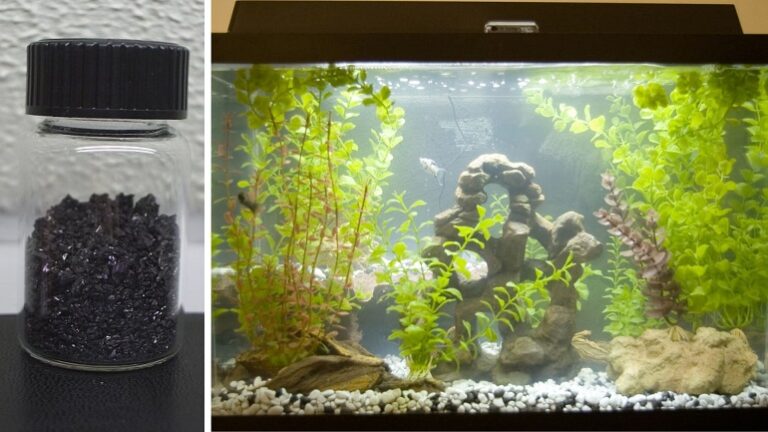
Hydrogen peroxide is milder than the bleach solution. It takes about 24 hours to turn into water when added to the fish tank. However, we do not generally add hydrogen peroxide directly into the aquarium.
Instead, we can use it to clean aquarium plants.
- Add one part of hydrogen peroxide to 150-200 parts of water.
- Soak the plants in this solution for 5-10 minutes.
- Rinse the plants with running water to remove all of the solutions.
If you want to use hydrogen peroxide for tank cleaning then it is better to shift the fish into some other clean container.
Cleaning Aquarium Plants with Potassium Permanganate
If your plants have more impurities other than algae then, it is better to use a potassium permanganate solution. It will eradicate all the snail eggs, bacteria and fungi stick to your aquarium plants.
- To prepare the solution, add 20mg of potassium permanganate crystals into a gallon of water. Wait until the solution turns deep color.
- Dip only the leaves of the live plants in this solution for about 5 minutes.
- Rinse the plants with plain water to remove any residual of the solution.
Final Thoughts
Do not be an over-excited aquarium owner and overcrowd the aquarium with plants and decorations. The more the objects, the more the cleaning. It will be difficult for you to maintain the aquarium effectively. If you are inattentive towards the cleaning, the stubborn algae will be waiting for you.
Try using the general and non-chemical methods to clean the tank plants. The bleaching method does clean the plants more effectively but it does equal damage. It can fade the color and texture of your plastic or silk plants.
If using bleach cleaning or other mild cleaners, be attentive to the ratio when preparing the solution. Do not overdo the amount of bleach or cleaners. However, you can also use vinegar and a dishwasher along with scrubs to clean the fish tank plants.
Thus, the regular and constant routine of cleaning the fish tank and plants is the answer to how to clean aquarium plants. Also, there will be lesser debris, and algae growth if you are cleaning the plants daily.


